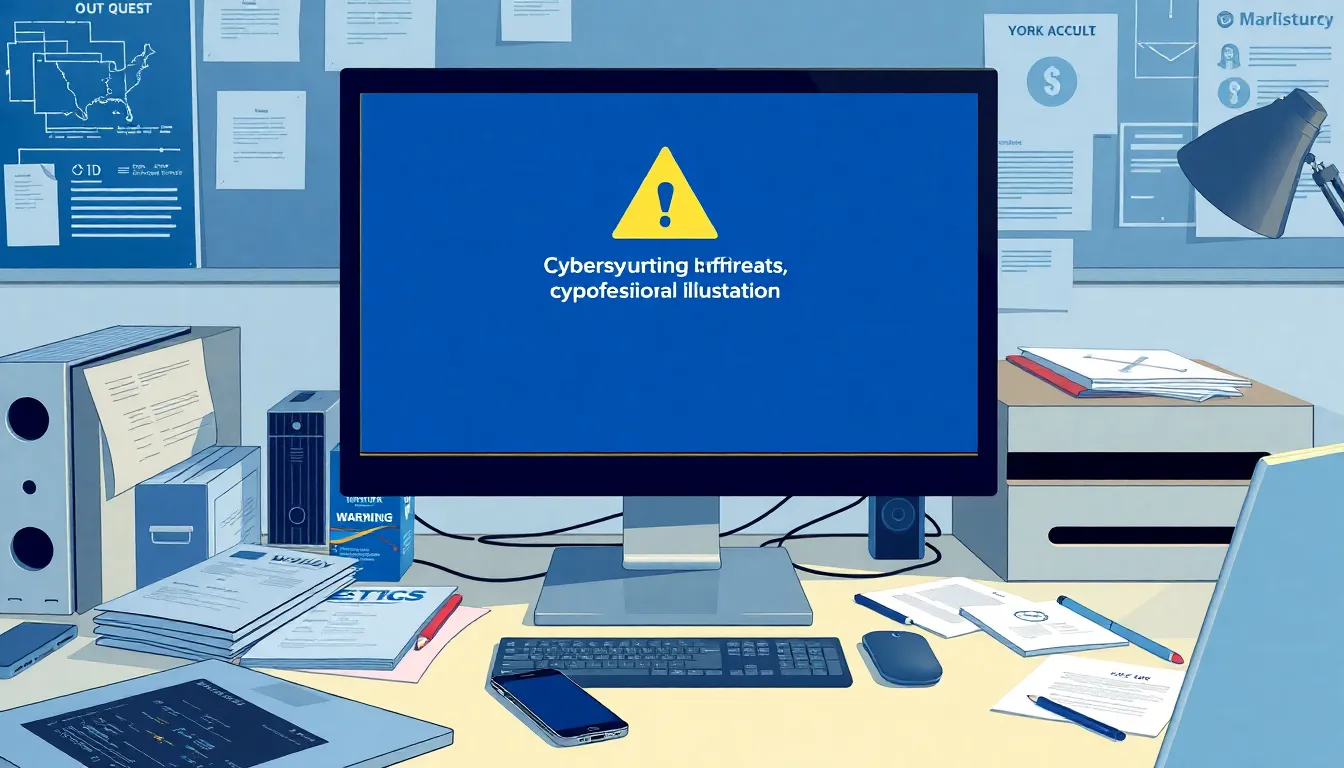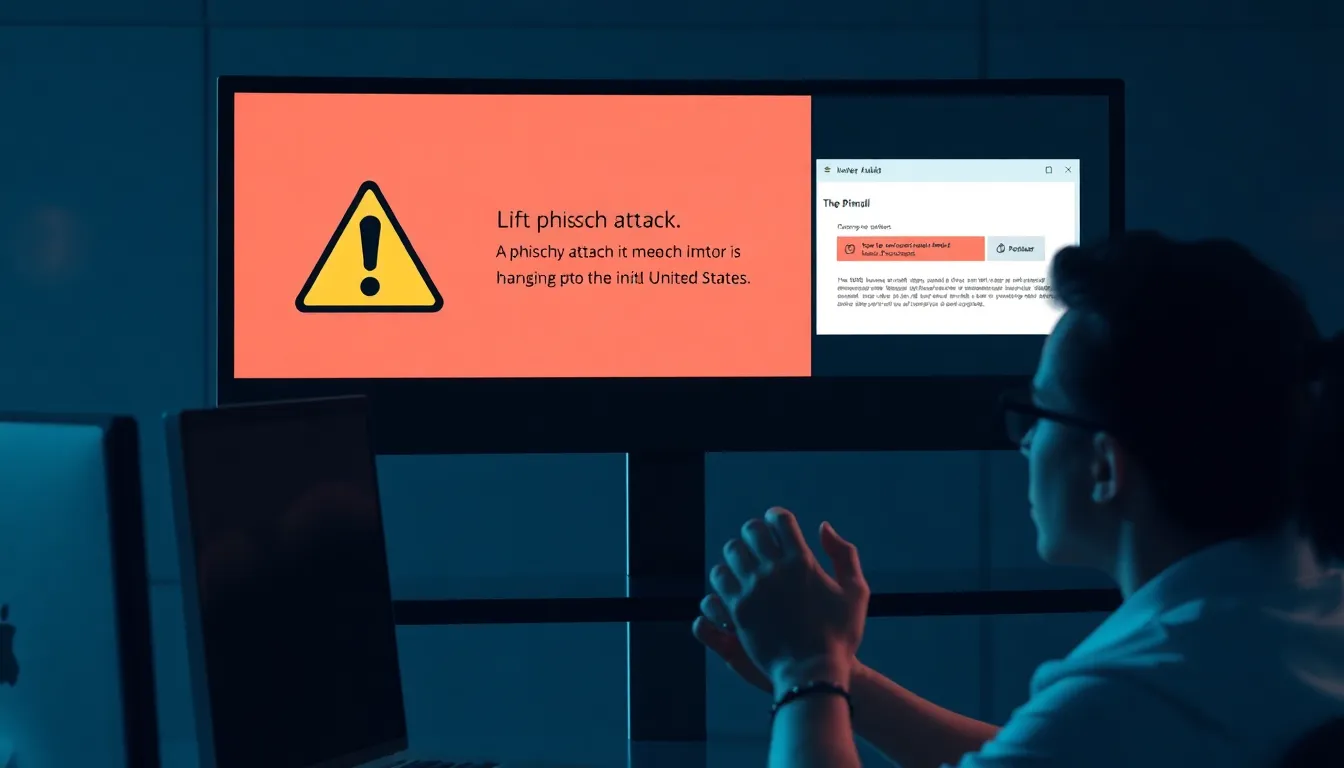In today’s digital age, cybersecurity threats are lurking around every virtual corner, ready to pounce on unsuspecting victims. Think of the internet as a bustling city where hackers are the pickpockets, just waiting for someone to drop their guard. From phishing scams that reel in the unsuspecting to ransomware that holds data hostage, these threats are like bad movies—predictable yet still terrifying.
But fear not! Understanding these threats is the first step in fortifying defenses. With a little knowledge and a dash of humor, anyone can navigate this digital minefield. So grab your virtual hard hat and prepare to dive into the world of cybersecurity, where the stakes are high, and the punchlines are sharper than a hacker’s wit. It’s time to outsmart the bad guys and keep your digital life safe and sound.
Table of Contents
ToggleOverview of Cybersecurity Threats
Cybersecurity threats continue to evolve, challenging organizations and individuals alike. Phishing scams remain prevalent, deceiving users into divulging sensitive information. Ransomware attacks target data and systems, often leading to significant financial losses. Malware refers to any malicious software designed to disrupt or gain unauthorized access to systems.
Denial of Service (DoS) attacks overwhelm networks, making services unavailable to legitimate users. Insider threats originate from current or former employees, posing risks to confidential data. Social engineering exploits human psychology to manipulate individuals into providing access to secure systems.
Botnets consist of numerous compromised devices utilized to execute attacks on a larger scale. Advanced Persistent Threats (APTs) employ sophisticated techniques to infiltrate networks undetected over extended periods. Additionally, Internet of Things (IoT) vulnerabilities arise as connected devices expand, increasing potential entry points for attackers.
Education and awareness play crucial roles in combatting these threats. Organizations must invest in cybersecurity training to empower employees with the skills to recognize and respond to potential attacks. Implementing robust security measures, such as firewalls and encryption, enhances overall protection against various threats.
Continuous monitoring and assessment of cybersecurity strategies remain essential for identifying vulnerabilities. Staying informed about the latest trends and threats can significantly reduce risks in the digital landscape.
Types of Cybersecurity Threats


Cybersecurity threats manifest in various forms and pose serious risks to individuals and organizations. Understanding these types aids in developing effective defense strategies.
Malware
Malware consists of software designed to disrupt, damage, or gain unauthorized access to computer systems. Viruses, worms, and Trojans fall under malware categories. They can spread through email attachments or malicious downloads. Notably, malware targets sensitive information and can cripple essential operations. Effective antivirus solutions and regular updates serve as critical countermeasures.
Phishing
Phishing attacks involve deceptive attempts to obtain sensitive information through fake emails and websites. Cybercriminals often impersonate trusted entities, enticing users to click on malicious links. Emails may appear legitimate, leading victims to provide login credentials or personal data. Individuals should verify the authenticity of communications before engaging. Organizations benefit from employee training on recognizing these threats.
Ransomware
Ransomware encrypts files on a victim’s device, rendering them inaccessible until a ransom is paid. Attackers typically demand payment in cryptocurrency to ensure anonymity. Such threats disrupt business operations, potentially causing significant financial losses. Maintaining regular backups proves essential for data recovery in these incidents. Organizations need to implement layered security protocols to minimize risks.
Impact of Cybersecurity Threats
Cybersecurity threats significantly affect organizations and individuals. Financial implications and damage to reputation represent two critical areas of impact.
Financial Losses
Cybersecurity threats can lead to severe financial losses for organizations. Ransomware attacks, for example, cost businesses an average of $1.85 million per incident. Fines related to data breaches also impose additional financial burdens, with penalties reaching up to $4.24 million under regulations like GDPR. Loss of customer trust results in decreased sales and revenue; businesses may face long-term consequences from hacking incidents. Investments in recovery efforts and enhanced security measures further strain budgets, diverting funds from other essential areas. Overall, financial losses from cybersecurity threats can cripple even well-established organizations.
Reputational Damage
Reputational damage often accompanies cybersecurity breaches. Customer trust erodes when sensitive data is compromised; this can lead to significant declines in customer loyalty. Companies like Equifax and Target faced extensive backlash following publicized security incidents, impacting their brands for years. The negative publicity that arises from breaches extends beyond immediate customers, affecting partnerships and potential collaborations. Stakeholders’ confidence diminishes, making it difficult to attract investment or talent. Long-lasting reputational damage results in increased scrutiny from regulators and the public, complicating recovery efforts.
Mitigation Strategies
Effective mitigation strategies play a crucial role in reducing cybersecurity threats. Both individuals and organizations need to adopt best practices to protect themselves.
Best Practices for Individuals
Individuals can greatly enhance their cybersecurity posture by following basic guidelines. Regularly updating software and applications helps close security gaps. Using unique, complex passwords for each account minimizes the risk of unauthorized access. Multifactor authentication adds an extra layer of protection against account breaches. Staying aware of phishing attempts reduces the likelihood of falling victim to scams. Lastly, backing up important data regularly safeguards against data loss from ransomware attacks.
Best Practices for Organizations
Organizations must implement a comprehensive cybersecurity framework to protect sensitive information. Training employees on cybersecurity awareness is essential in recognizing threats. Establishing strong password policies, including regular changes, enhances security. Using firewalls and intrusion detection systems creates a barrier against potential attacks. Conducting regular security assessments identifies vulnerabilities early, ensuring timely remediation. Developing an incident response plan prepares organizations to respond swiftly to breaches, minimizing damage.




